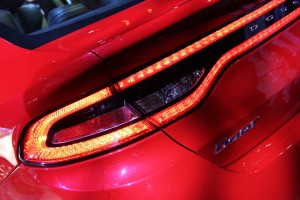
Blink, blink. A new study suggests failure to properly use turn signals causes 2 million accidents annually.
Forget distracted driving. A new study says there’s a far more serious problem that’s responsible for as many as 2 million accidents annually.
When’s the last time you used your own turn signals? According to research by the Society of Automotive Engineers, drivers either neglect to use their signals when changing lanes – or fail to turn the signals off – 48% of the time. And when making a turn the failure rate is around 25%. That works out to 2 billion times a day drivers fail to use signals, or 750 billion times annually.
A lack of courtesy? Laziness? Poor training? Whatever the reason, the SAE study says the problem results in about 2 million roadway collisions annually. That’s more than twice the 950,000 accidents linked to distracted driving, which has become one of the central topics of the U.S. Department of Transportation under Sec. Ray LaHood.
“This is a first of its kind report on a subject that amazingly, has never been studied,” said Richard Ponziani, P.E., President of RLP Engineering and author of the report. Yet, despite the fact that turn signals are simple, ubiquitous and “extremely effective,” there is an epidemic lack of compliance even though “all drivers have an ongoing duty to use it, just as they have a duty to stop at a stop sign or at a red light.”
Anecdotal evidence suggests that police put little effort into enforcement, less than they devote to speeding, or running stop signs and red lights. Other than shifting priorities, the new study suggests an alternative that it dubs the “Smart Turn Signal.”
They “are the perfect complement to the Stability Control System since Stability Control predominately prevents single-vehicle crashes, whereas the Smart Turn Signal prevents multi-vehicle crashes,” suggested Ponziani.
Such a system would automatically shut off a turn signal, likely by timing out after a set delay or by detecting when a vehicle has finished changing lanes – much as today’s cars automatically cancel the signals after making a turn at an intersection.
For scofflaws who simply don’t use their signals, the system would work much like a seatbelt reminder. It would be able to sense if drivers routinely ignore their turn signals and start to flash what the study calls a “friendly” reminder.
Using the latest electronics, a Smart Turn Signal system would actually be simpler and less expensive than the current mechanical trip mechanism, according to Ponziani, a press release concluding that, “This breakthrough represents a perfect opportunity to significantly reduce multi-vehicle crash rates, reduce vehicle cost and make driving a lot more friendly and courteous across the U.S.”
